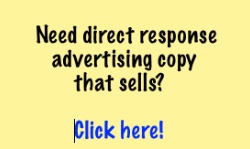by Brad Petersen
I talk to business owners from time to time who get caught up in the idea of building a brand for their product or company.
Most of them don’t really know what branding is. They believe it’s about repeatedly putting their company name in front of prospects in the hopes that those prospects will remember them when it comes time to buy.
So they’ll create a fancy logo, letterhead or sign, and plaster it on their business card, in their advertising and in their customer communications.
And, more often than not, the results are dismal, so they give up on advertising (and branding) altogether, figuring it’s a waste of time and money.
When Branding Makes Sense… and When it Doesn’t
This is both a misunderstanding of branding and a lousy way to advertise your business.
In the simplest terms, real branding involves building a market identity around your company name, logo or signage that immediately makes people think good things about their company and gets them to choose your product or service when it comes time to buy.
And you cement this brand image into your prospects’ minds by hitting them again and again with your advertising — and then, of course, by delivering on your promise, which further cements the brand image in the prospect’s mind.
For big, consumer companies with deep pockets brand building makes perfect sense. There’s probably no other approach that will work for the likes of Coca-Cola, Proctor and Gamble (Tide, Cascade, Charmin) and Nike.
Millions of people buy their products every single day and they’re more likely to buy from names they know and trust — which largely explains why brand-name products routinely outsell generic products, even when the generic is just as good.
The Terrible Truth About Branding
The problem for the small business owner is that building a brand that resonates the way Tide or McDonald’s does costs millions upon millions of dollars. And it’s not as if you can stop once you’ve built the brand. You have to spend millions more to sustain it.
Worse yet, it takes time. I recently read an article on branding that lauded Nike’s branding strategy. The problem is, it took Nike 15 years to build the brand we know and love today. I don’t know about you, but I sure don’t have that kind of time!
Now, of course, to build a local brand you can probably get away with spending less money and a lot less time — but that doesn’t mean it’s time or money well spent.
The Profitable Alternative to Building a Brand
So instead of using your advertising to build a brand, use it to drive sales — immediate sales. And that means crafting benefit-oriented direct response ads, sales letters, e-mails and landing pages.
Direct response advertising reveals all the benefits your prospects will get from responding to your ad, make a specific offer (buy now, request more info, come in and save 10%, etc.) and ask them to take action immediately by calling you, going to your web site or stopping by your store.
Direct response advertising may not be as romantic and exciting as building a brand, but for a small business owner, it’s more effective at making the cash register ring right now. And you don’t have to mortgage your kids to pay for it.

